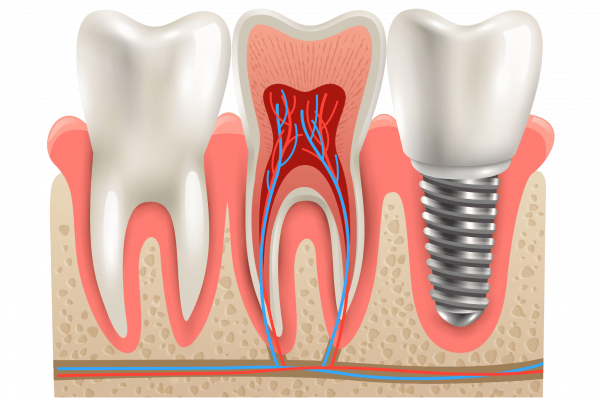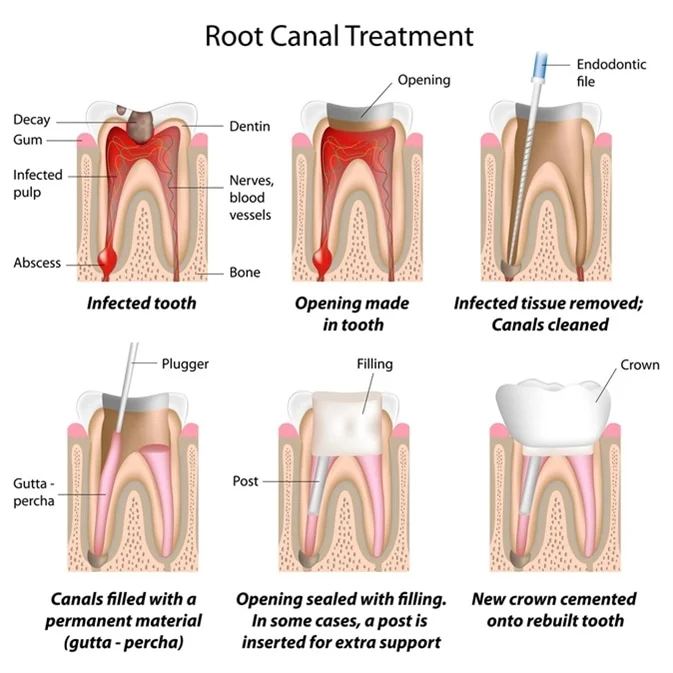Root canals can save teeth that are badly decayed or infected.
Root canals can help to prevent further damage to the tooth.
Root canals can help to protect the tooth from further damage.

How do you know if you need a root canal?
Root canals are needed for a cracked tooth from injury or genetics, a deep cavity, or issues from a previous filling. Patients generally need a root canal when they notice their teeth are sensitive, particularly to hot and cold sensations.
Root canal treatment in 5 steps
Local anesthesia is used to numb the tooth and the surrounding area.
A small hole is drilled into the tooth to access the pulp chamber.
The infected tissue is removed and the canals are cleaned and shaped.
The canals are filled with a biocompatible material and the tooth is sealed.
A dental crown is placed on the tooth to protect it from further damage.

Frequently asked questions
Root canal treatment is a procedure used to save a tooth that has become infected or damaged. The procedure involves removing the damaged tissue from inside the tooth, cleaning and disinfecting the area, and then filling and sealing the tooth.
Root canal treatment is necessary when the tissue inside the tooth becomes damaged or infected. This can happen due to tooth decay, injury, or other conditions. Without treatment, the damage can spread to the rest of the tooth and eventually lead to tooth loss.
Root canal treatment is performed by first removing the damaged or infected tissue from inside the tooth. The area is then cleaned and disinfected. A filling and sealant are then placed inside the tooth to protect it from further damage.
There are minimal risks associated with root canal treatment. The most common complication is a small chance of the infection returning. Other risks include pain, swelling, and bruising.
Root canal treatment usually takes one or two visits to the dentist. The first visit is to remove the damaged or infected tissue and to clean and disinfect the area. The second visit is to place the filling and sealant.

